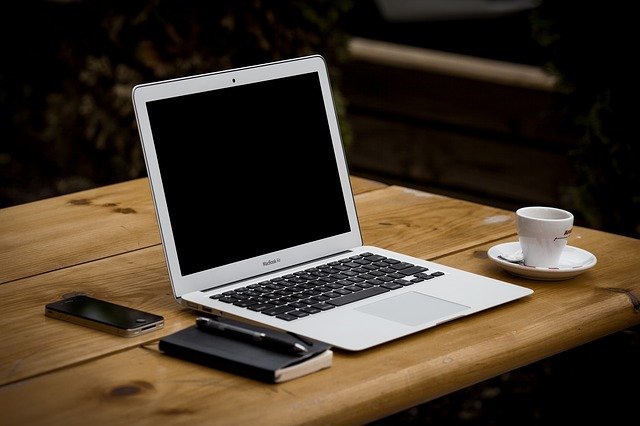Table of Contents
how to clean laptop screen without streaks
When the perfect beam of daylight hits your computer monitor and you squint to see through the scattered fingerprints and dust, the thought enters your mind: “Wow, when was the last time I cleaned this? Screens come in a variety of shapes and sizes, and cleaning techniques vary by surface. Because the active components of cleaning agents can disrupt the display of sensitive glass or create irreversible damage in the form of streaks and scratches if you clean the screen improperly, knowing how to clean your individual screen is vital.
When you’re trying to work, staring at a dirty computer screen can be an incredible distraction. Set five minutes to clean your computer screen with two common household chemicals and you will be rewarded with a streak-free finish.
What you will need
Materials:
- Distilled water
- White vinegar
Instruments:
- Microfiber cleaning cloth (or a cotton cloth)
- Spray bottle
- Cleaning cloth for glasses
Instructions:
- Combine equal parts distilled water and white vinegar in an empty spray container. Half a cup of each was used.
- Apply the solution to a microfiber cloth with a spray bottle (or an old cotton t-shirt). To clean your screen, do not use a paper towel, toilet paper, or tissues, as these things can scratch it. 3. Begin cleaning around the screen in small circular motions until you have covered the entire surface. Using an eyeglass cloth, repeat the process.
- Clean any remaining stains on the computer using the solution.
Cleaning tips to remember:
- Before cleaning, always turn off your computer and monitor.
- Avoid using too much water, especially when cleaning around plugs and ports.
- Never spray cleaning solution directly on your screen. Spray it on a towel and wipe the screen with it.
- Know what type of screen you have and, if in doubt, consult the manufacturer’s cleaning instructions.
Screens on Mac vs. PC
Is there a difference between cleaning a Mac screen and cleaning a PC screen? Yes, in a word. Although there are hundreds of different computer and monitor models to choose from, the displays are typically LED backlit panels with LCD (liquid crystal display) pixels or a non-LCD glass-coated surface. It’s also worth noting that some of the latest matte glass displays have nano-textured glass, which requires the use of a special cleaning cloth from the manufacturer and should not be cleaned with anything else.
LCD screens are more vulnerable to cleaning solutions, but because they are so ubiquitous in laptops and standalone computer monitors, there are a host of simple cleaning methods available. They are not difficult to clean, but you will need to be careful and careful to avoid damaging the surface or any part of the LED. Any cleaning that contains ammonia will leave a residue. Soap and water can damage your skin. Most Mac computer screens are glass-coated and can be cleaned and maintained streak-free more easily than LCD products with glass cleaners such as Windex or a cloth lightly sprayed with isopropyl alcohol. Apple sells a special polishing cloth for nano-textured glass displays on items like the Apple Pro Display XDR or the iMac.
How to Clean a Non-LCD Computer Screen
- Unplug and turn off your device.
- Wipe the screen with a dry microfiber towel to remove dust.
- To clean non-porous surfaces such as the screen, spray 70 percent isopropyl alcohol on a cloth or use a pre-moistened alcohol wipe or Clorox disinfectant wipe; do not use bleach.
- Wipe the glass surface and corners with a clean cloth or wipe, being careful not to let any additional moisture absorb from the cloth or cloth.
- Let the screen dry naturally.
- If there are any remaining streaks, wipe them with a microfiber cloth.
How to clean a computer screen (LCD or LED)
- Unplug and turn off your device.
- With a dry microfiber towel, wipe off the dust.
- Spray an LCD cleaning spray on a dust-free side of your microfiber cloth to clean stains and scratches on the screen surface; an easy DIY alternative is 1: 1 parts white vinegar and distilled water.
- Wipe the surface with a cloth, but do not let water get on the edges of the screen.
- Let the screen dry naturally.
- If there are any remaining streaks, wipe them off with the dry edge of the microfiber cloth.
Here’s how to safely clean a non-LCD laptop screen with Lysol wipes:
- Unplug your laptop from the power source and, if possible, turn it off (do the same for the monitors).
- Wipe the screen with a clean microfiber cloth to remove dust, marks, and any other surface-level fingerprints, if possible.
- Squeeze out a Lysol disinfectant wipe to make sure it is not too wet. You can clean your laptop screen once, being careful not to touch any openings (including ports or speakers).
- Let your screen dry naturally. If streaks appear, Forte recommends wiping it again with a clean microfiber towel, as the extra friction will help remove more germs while also smoothing out the streaks. While this technique will not completely disinfect the screen, a cloth followed by a touch-up with a microfiber cloth may be sufficient.
Can I clean my laptop screen with soap and water?
If you have a laptop with a regular LCD screen, you should avoid disinfecting wipes, according to Hewlett-Packard, as the active chemicals in Clorox and Lysol wipes could damage your screen. The following HP customer service page explains why: “Do not use acetone, ethyl alcohol, toluene, ethyl acid, ammonia, or methyl chloride, or any solution that contains them.
Should I do the same with my keyboard?
Because your keyboard is connected to your laptop, you might be wondering if disinfectants should be used on it as well. Apple says you shouldn’t use abrasive or solvent-based cleaners because they “can damage the finish.

